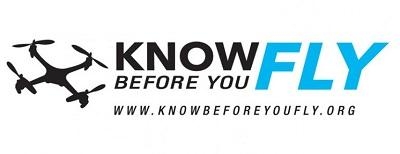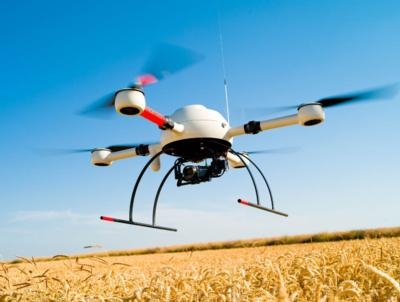Thu, Jan 19, 2017
Know Before You Fly Reminds UAS Users To Check For Flight Restrictions During The Presidential Inauguration
While this ‘Know Before You Fly’ reminder is primarily aimed at drone operators in the Washington, D.C. area, it’s also a reminder for drone operators to understand the Know Before You Fly program and what it offers. Of course, the presidential inauguration is a unique event, but many of the admonitions for caution and following the rules at this event can apply to other events.

In a Know Before You Fly bulletin UAS operators are reminded to check flight restrictions in effect around the Washington, D.C. area ahead of the Presidential Inauguration on January 20. During this time frame, all UAS (including model aircraft) operations will be prohibited within a 30 nautical mile radius of Ronald Reagan Washington National Airport (DCA), including the National Mall, U.S. Capitol and the White House.
The area within a 15 nautical mile radius of DCA is a Flight Restricted Zone (FRZ). No UAS flights are allowed in this area at any time without specific FAA authorization. In addition, the area within a 15 to 30 nautical mile radius of DCA is a Special Flight Rules Area (SFRA). Both the FRZ and SFRA will include additional flight restrictions between 9 a.m. ET and 7 p.m. ET on January 20.

It’s important to understand that these complex flight restrictions are aimed at both recreational and non-recreational drone operators. A recreational operator cannot get off the hook by saying they were just flying recreationally and were not actively participating in the event.
When TFRs are not in place, Know Before You Fly would like to remind flyers to follow these rules to keep the skies safe for all:
- Fly no higher than 400 feet.
- Fly within visual line of sight.
- Stay well clear of other aircraft.
- Never fly within 5 miles of an airport without contacting airport authorities or air traffic control.
- Keep well away from emergency response efforts, such as fires.
- Beware of FAA airspace requirements.
- Don’t fly under the influence.
- Make sure to register before your first flight.
Know Before You Fly was launched in December 2014 by the Association for Unmanned Vehicle Systems International and the Academy of Model Aeronautics in partnership with the Federal Aviation Administration, with the goal of spreading awareness about safe and responsible use of unmanned aircraft systems.
(Image from file)
More News
Aero Linx: Florida Antique Biplane Association "Biplanes.....outrageous fun since 1903." That quote really defines what the Florida Antique Biplane Association (FABA) is all about.>[...]
Beyond Visual Line Of Sight (BVLOS) The operation of a UAS beyond the visual capability of the flight crew members (i.e., remote pilot in command [RPIC], the person manipulating th>[...]
Also: ForeFlight Upgrades, Cicare USA, Vittorazi Engines, EarthX We have a number of late-breaking news highlights from the 2024 Innovation Preview... which was PACKED with real ne>[...]
“For Montaer Aircraft it is a very prudent move to incorporate such reliable institution as Ocala Aviation, with the background of decades in training experience and aviation>[...]
Maximum Authorized Altitude A published altitude representing the maximum usable altitude or flight level for an airspace structure or route segment. It is the highest altitude on >[...]
 ANN's Daily Aero-Linx (04.13.24)
ANN's Daily Aero-Linx (04.13.24) ANN's Daily Aero-Term (04.13.24): Beyond Visual Line Of Sight (BVLOS)
ANN's Daily Aero-Term (04.13.24): Beyond Visual Line Of Sight (BVLOS) Airborne 04.09.24: SnF24!, Piper-DeltaHawk!, Fisher Update, Junkers
Airborne 04.09.24: SnF24!, Piper-DeltaHawk!, Fisher Update, Junkers Aero-News: Quote of the Day (04.14.24)
Aero-News: Quote of the Day (04.14.24) ANN's Daily Aero-Term (04.14.24): Maximum Authorized Altitude
ANN's Daily Aero-Term (04.14.24): Maximum Authorized Altitude




